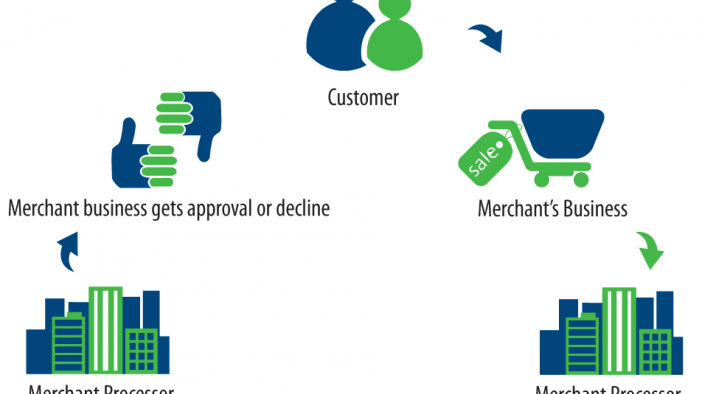A payment processor is a company (often a third party) appointed by a merchant to handle transactions from various channels such as credit cards and debit cards for merchant acquiring banks. They are usually broken down into two types: front-end and back-end.
Front-end processors have connections to various card associations and supply authorization and settlement services to the merchant banks' merchants. Back-end processors accept settlements from front-end processors and, via The Federal Reserve Bank for example, move the money from the issuing bank to the merchant bank.
In an operation that will usually take a few seconds, the payment processor will both check the details received by forwarding them to the respective card's issuing bank or card association for verification, and also carry out a series of anti-fraud measures against the transaction.
Additional parameters, including the card's country of issue and its previous payment history, are also used to gauge the probability of the transaction being approved.
Once the payment processor has received confirmation that the credit card details have been verified, the information will be relayed back via the payment gateway to the merchant, who will then complete the payment transaction. If verification is denied by the card association, the payment processor will relay the information to the merchant, who will then decline the transaction.

History of payment processors
In the 16th century, paper currency became a way to trade commodity resources, like tobacco leaves stored in a warehouse. A producer would deposit his crop with the depot, and the depot-keeper would give a bearer-demand note to the depositor which he could trade on the open market for other goods and services.
How To Start A Credit Card Processing Company Video
Modern payment processing
Due to the many regulatory requirements levied on businesses, the modern payment processor is usually partnered with merchants through a concept known as software-as-a-service (SaaS). SaaS payment processors offer a single, regulatory-compliant electronic portal that enables a merchant to scan checks (often called remote deposit capture or RDC), process single and recurring credit card payments (without the merchant storing the card data at the merchant site), process single and recurring ACH and cash transactions, process remittances and Web payments. These cloud-based features occur regardless of origination through the payment processor's integrated receivables management platform. This results in cost reductions, accelerated time-to-market, and improved transaction processing quality.
Transaction processing quality
Electronic payments are highly susceptible to fraud and abuse. Liability to the merchant for misuse of credit card data can create an exposure to significant financial loss if the merchant were to attempt to manage such risks on his own. One way to lower this cost and liability exposure is to segment the transaction of the sale from the payment of the amount due. Some merchants have a requirement to collect money from a customer every month. SaaS payment processors relieve the responsibility of the management of recurring payments from the merchant and maintain safe and secure the payment information, passing back to the merchant a payment token. Merchants use this token to actually process a charge which makes the merchant system fully PCI-compliant. Some payment processors also specialize in high-risk processing for industries that are subject to frequent chargebacks, such as adult video distribution.
Payment processing network architecture
Typical network architecture for modern online payment systems is a chain of service providers, each providing unique value to the payment transaction, and each adding cost to the transaction. Merchant -> Point-of-sale SaaS -> Aggregator -> Credit Card Network -> Bank. The merchant can be a brick-and-mortar outlet or an online outlet. The Point-of-sale (POS) SaaS provider is usually a smaller company that provides customer support to the merchant and is the receiver of the merchant's transactions. The POS provider represents the Aggregator to merchants. The POS provider transaction volumes are small compared to the Aggregator transaction volumes. The POS provider does not handle enough traffic to warrant a direct connection to the major credit card networks. The merchant also does not handle enough traffic to warrant a direct connection to the Aggregator. In this way, scope and responsibilities are divided among the various business partners to easily manage the technical issues that arise.
Are You Looking for Products
Here some products related to "Payment Processor".
Cheapest Way To Payment P..
QuickBooks Point of Sale ..
TurboTax Deluxe Fed + Efi..
THE ULTIMATE GUIDE TO CHO..
Get these at Amazon.com* amzn.to is official short URL for Amazon.com, provided by Bitly
Source of the article : here


EmoticonEmoticon